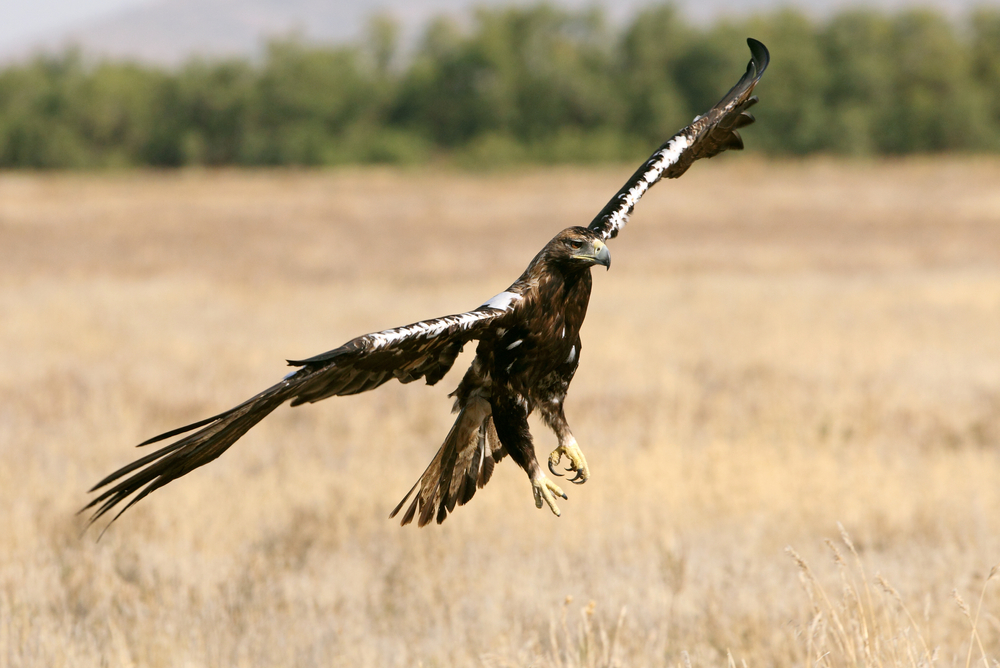National Symbols: National Bird
Spanish Imperial Eagle (common name)
Aquila adalberti (scientific name)
Designation
Unofficial
Classification
- Kingdom: Animalia
- Phylum: Chordata
- Class: Aves
- Order: Accipitriformes
- Family: Accipitridae
- Genus: Aquila
- Species: A. adalberti
The Bird
This Spanish imperial eagle is a bird of prey that measures about 72 to 85 centimeters (28 to 33 inches), with a wingspan of 177 to 220 cm (70 to 87 in). Adult plumage is a rich blackish-brown across the torso, with a white band on the shoulder and on the leading edge of the wing. The head is a paler tawny brown.
The bird is endemic to Europe, with a range that covers the central and southwest regions of the Iberian peninsula, specifically in the areas of Extremadura, Ciudad Real, Sierra Norte, and north of Huelva. It is a resident—as opposed to migratory—species. It prefers the alluvial plains and dunes of the Guadalquivir marshes, the plains and hills of central Spain, and the high slopes of the Central System mountain range.
Male and female of this species form monogamous couples around four years of age and stay together for life. They prefer dry, mature woodlands for their nesting habitat, out of the way of human activity and with nearby access to wetlands. Stick nests are typically built in cork-oaks or pines and are reused year after year, with size increasing yearly as new materials are added. Nesting takes place from February through April, with a typical clutch size of two to three eggs that hatch after about 43 days. Young birds fledge at between 63 and 77 days, although juveniles may remain in the nest for as much as 5 months after fledging.
The Spanish imperial eagle's diet is made up primarily of European rabbits, but as the rabbit population has declined, the species' prey spectrum has expanded to include rodents, hares, weasels, and hedgehogs, and more than 60 bird species, with a preference for water birds such as coots, ducks, and geese. It stalks its prey from the treetops or chases its food in flight.
Eagles of this species can reach the wild in the 20 years of age and have been reported individuals up to 41 years in captivity.
The species has been categorized as vulnerable in the International Union for Conservation of Nature's Red List of Threatened Species. It faces habitat loss, declining food resources, and the threat of electrocution and poisoning due to human encroachment.
The Significance
The Eagle of Saint John is a heraldic eagle associated mostly with the Catholic Monarchs. In Spain the eagle has appeared on the shield of the 15th-century Spanish Catholic monarchs Isabella and Ferdinand. It was used by the Spanish dictator Francisco Franco (1939–1977) as a symbol of his regime and later became a symbol of the Spanish transition to democracy (1977–1981).
Article written for World Trade Press by WTP Staff.
Copyright © 1993—2025 World Trade Press. All rights reserved.

 Spain
Spain 
